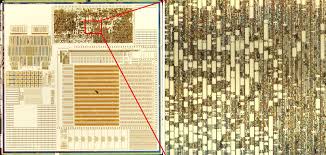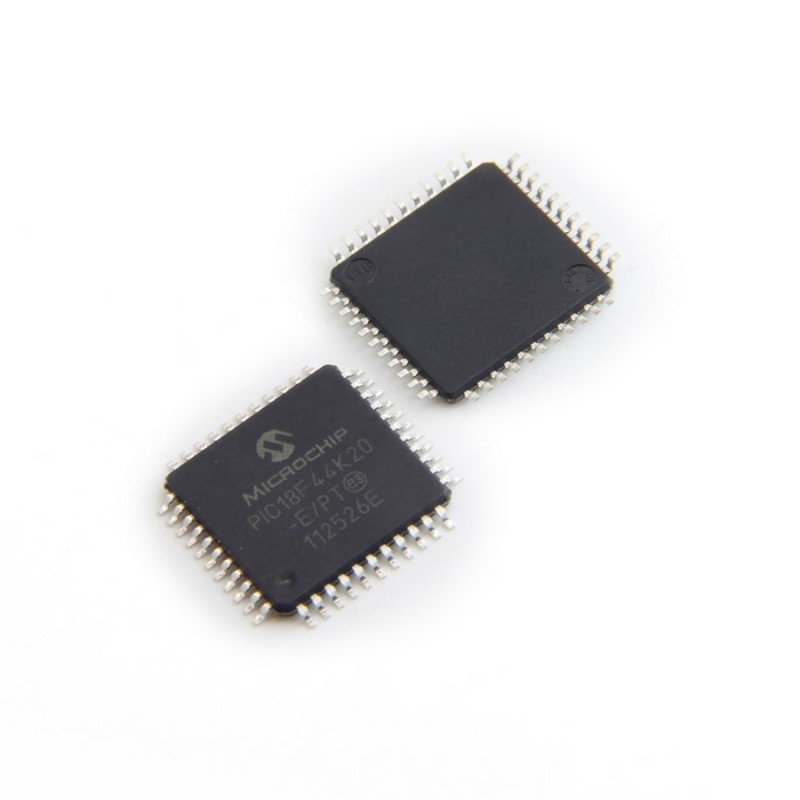Crack IC PIC18F44K20 Binary
Crack IC PIC18F44K20 and extract embedded firmware from microchip mcu pic18f44k20, through microcontroller pic18f44k20 reverse engineering we can locate the fuse bit inside the processor;
The LP, XT and HS modes support the use of quartz crystal resonators or ceramic resonators connected to OSC1 and OSC2 (Figure 2-3). The mode selects a low, medium or high gain setting of the internal inverter amplifier to support various resonator types and speed.

LP Oscillator mode selects the lowest gain setting of the internal inverter-amplifier. LP mode current consumption is the least of the three modes. This mode is best suited to drive resonators with a low drive level specification, for example, tuning fork type crystals if read microcontroller microchip pic18f442 software.
XT Oscillator mode selects the intermediate gain setting of the internal inverter-amplifier. XT mode current consumption is the medium of the three modes. This mode is best suited to drive resonators with a medium drive level specification.
HS Oscillator mode selects the highest gain setting of the internal inverter-amplifier. HS mode current consumption is the highest of the three modes. This mode is best suited for resonators that require a high drive setting after Crack mcu pic18f248 bin.
The external Resistor-Capacitor (RC) modes support the use of an external RC circuit. This allows the designer maximum flexibility in frequency choice while keeping costs to a minimum when clock accuracy is not required. There are two modes: RC and RCIO.

In RC mode, the RC circuit connects to OSC1. OSC2/CLKOUT outputs the RC oscillator frequency divided by 4. This signal may be used to provide a clock for external circuitry, synchronization, calibration, test or other application requirements when Crack microcontroller pic18f448 flash memory.
In RCIO mode, the RC circuit is connected to OSC1. OSC2 becomes an additional general purpose I/O pin. The RC oscillator frequency is a function of the supply voltage, the resistor (REXT) and capacitor (CEXT) values and the operating temperature. Other factors affecting the oscillator frequency:
· input threshold voltage variation
· component tolerances
· packaging variations in capacitance
The user also needs to take into account variation due to tolerance of external RC components used. The Oscillator module has two independent, internal oscillators that can be configured or selected as the system clock source.
1. The HFINTOSC (High-Frequency Internal Oscillator) is factory calibrated and operates at 16 MHz. The frequency of the HFINTOSC can be user-adjusted via software using the OSCTUNE register (Register 2-2) after Crack IC.
The LFINTOSC (Low-Frequency Internal Oscillator) operates at 31 kHz. The system clock speed can be selected via software using the Internal Oscillator Frequency Select bits IRCF<2:0> of the OSCCON register.
The HFINTOSC is factory calibrated but can be adjusted in software by writing to the TUN<5:0> bits of the OSCTUNE register (Register 2-2). The default value of the TUN<5:0> is ‘000000’. The value is a 6-bit two’s complement number when Crack IC.
When the OSCTUNE register is modified, the HFINTOSC frequency will begin shifting to the new frequency. Code execution continues during this shift. There is no indication that the shift has occurred. OSCTUNE does not affect the LFINTOSC frequency. Operation of features that depend on the LFINTOSC clock source frequency, such as the Power-up Timer (PWRT), Watchdog Timer (WDT), Fail-Safe Clock Monitor (FSCM) and peripherals, are not affected by the change in frequency.
The OSCTUNE register also implements the INTSRC and PLLEN bits, which control certain features of the internal oscillator block. The INTSRC bit allows users to select which internal oscillator provides the clock source when the 31 kHz frequency option is selected. This is covered in greater detail in Section 2.2.3 “Low Frequency Selection”.
The PLLEN bit controls the operation of the frequency multiplier, PLL, in internal oscillator modes. For more details about the function of the PLLEN bit see Section 2.6.2 “PLL in HFINTOSC Modes” The Low-Frequency Internal Oscillator (LFINTOSC) is a 31 kHz internal clock source.
Tags: engenharia reversa microprocessador bloqueado PIC18F44K20 memória flash,recuperar memória flash PIC18F44K20 do microprocessador bloqueado,restaurar a memória flash do microprocessador bloqueado PIC18F44K20,retrabalho microprocessador bloqueado PIC18F44K20 memória flash

